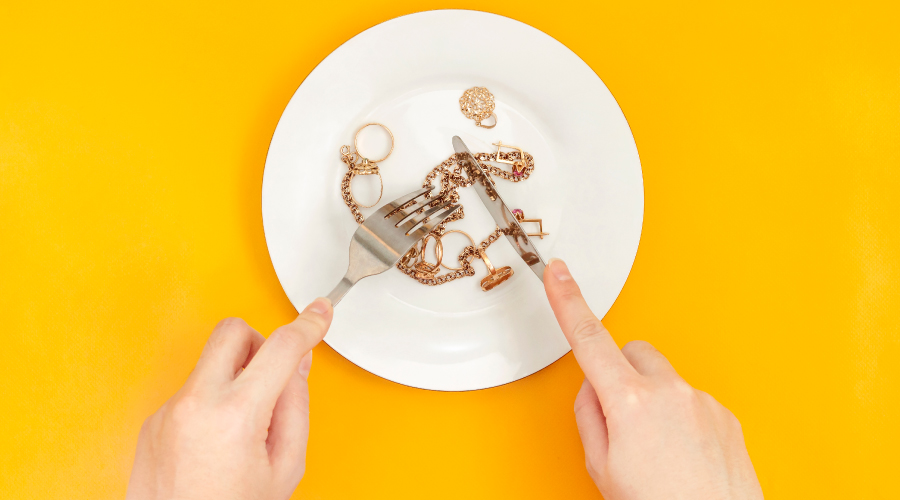

A pica eating disorder is a mental condition where a person is more interested in eating non-food items. This disorder can be seen in kids and adults with certain medical conditions. Although this is not very harmful, eating or swallowing things can make this disorder dangerous. However, there are treatment options and therapies available to treat this disorder. Let’s learn more about them.
Know Everything About Pica
Pica eating disorder is a condition in which people eat anything that is not considered a food item. It can affect young kids who may put anything in their mouth, like grass, toys, or any other non-eating thing, just out of curiosity. However, with pica, they will be inclined to eat them instead of normal food. Similarly, adults can also be affected by this condition. For example, eating chalk is also considered a pica disorder.
Some Pica Eating Disorder Facts
According to the Handbook of Clinical Child Psychology, people living in special institutions are more likely to catch this disorder, and the incident range can be between 4-26%. It does not mean it is not common in people living independently, but the concern is that this is a hidden habit which makes it difficult to calculate the incidents. Most people, parents, or families of the affected people are secretive about what the person is eating, and thus, it can often delay the diagnosis as well. The worrisome news is the condition is significantly increasing, and as per BEAT (Beat Eating Disorders Charity), the requests for pica help have doubled in the last two years.
Symptoms of Pica
A person is considered to be suffering from pica if they eat non-food items for more than one month. The person is diagnosed if the behaviour is not culturally supported or developmentally appropriate. In most cases, this condition is also associated with other mental conditions, such as:
- Autism
- Schizophrenia
- Intellectual disability
- Obsessive-compulsive disorder.
Based on the underlying health condition, the person will get their diagnosis. Symptoms of pica include eating these items:
| Dirt | Ash | Clay |
| Coal or Charcoal | Starch | Pebbles |
| Ice | Metal | Paper |
| Gum | Soap | Paint |
| Cloth | Talcum Powder | Hair |
| Chalk | String | Soil |
Pica Eating Disorder Causes
Unfortunately, there is no single cause that could lead to the development of the pica condition. In some patients, it could be because of a deficiency linked to zinc, iron, or any other nutrient. For instance, in the case of pregnant women, anaemia can be the reason for pica. The sign of unusual cravings indicates that your body is not getting enough nutrients and is looking for options to replenish the same. If a person is suffering from a mental health condition, pica can become a coping mechanism for them. At the same time, there can be others who may just eat because they like the taste and texture of these non-food items. Besides, there are some cultures where eating clay, in particular, is considered ok. This is known as geophagia pica. Other causes can be malnutrition or dieting, where eating non-food items can satisfy an individual.
How is Pica Diagnosed?
There is no specific test to identify pica issues in a person. However, suppose the doctor is aware that the person is suffering from malnutrition or has a low nutrient profile. In that case, they may advise for blood tests to understand the nutrient composition, especially zinc and iron. They can also be asked to get haemoglobin checked to rule out anaemia.
In case the person has ingested lead or paint, the doctors can get a lead level checked to rule out any toxin in the body. Similarly, if pica involves eating soil, the test may be conducted for an infection/parasite.
Pica Eating Disorder Treatment
Pica treatment is not only related to the treatment of pica but other things associated with it, such as:
- Treatment of any underlying medical conditions
- Treatment in case of any damage caused by eating any harmful substance.
Some treatment options to control or stop the pica disorder are:
- Including dietary supplements to improve nutritional deficiencies
- If any ingestion of a toxin, such as lead, etc., the treatment plan will vary
- Therapies, such as mild aversive, behavioural, and differential reinforcement, to improve pica behaviours.
In general, no special medicines are given to pica patients.
Conclusion
Pica can be a serious condition if the person has ingested something harmful or toxic. This condition is more difficult to manage if the person is suffering from any underlying mental health condition. Therefore, it is advised that behavioural therapies be introduced as soon as possible to treat this condition and lead a healthy life.




